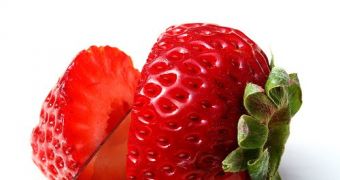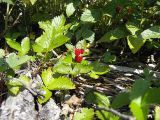An international group of researchers has sequenced and decoded the genome of the woodland strawberry, opening the way to new breeding possibilities within the berries family.
The woodland strawberry, also known as Fragaria vesca, looks like the cultivated strawberry, but from a genetic point of view is much simpler, thus making it easier for scientists to study.
It has only 14 chromosomes, possessing one of the smallest genomes among the economically important plants, nevertheless it contains nearly 240 million base pairs.
Among the 75 researchers from 38 institutions that worked on the sequencing of the genome, were two scientists from Georgia Tech – Mark Borodovsky, a Regents professor with a joint appointment in the Wallace H. Coulter Department of Biomedical Engineering at Georgia Tech and Emory University and the Georgia Tech School of Computational Science and Engineering, and Paul Burns, who worked as a bioinformatics PhD student on the project.
Once the genomic sequence was uncovered, the Georgia Tech researchers led the identification of the protein-coding genes in the sequence.
They used a brand new pattern recognition program, called GeneMark.hmm-ES+, to identify 34,809 genes, of which 55% were assigned to gene families.
The program repetitively identified the correct algorithm parameters from the DNA sequence and transcriptome data, by using a probabilistic model, called the Hidden Markov Model.
The model helped pinpoint the boundaries between coding sequences (the exons) and non-coding sequences (either introns or intergenic regions).
Kevin Folta, an associate professor with the University of Florida's Institute of Food and Agricultural Sciences and the leader of the consortium, said hat they have “created the strawberry parts list.
“For every organism on the planet, if you're going to try to do any advanced science or use molecular-assisted breeding, a parts list is really helpful.
“In the old days, we had to go out and figure out what the parts were. Now we know the components that make up the strawberry plant.”
Borodovsky, who is also director of Georgia Tech's Center for Bioinformatics and Computational Genomics, explained that “GeneMark.hmm-ES+ is a hybrid program that uses both DNA and RNA sequences to predict protein-coding genes.”
“Our approach to gene prediction in the strawberry genome proved highly effective, with 90 percent of the genes predicted by the hybrid gene model supported by transcript-based evidence,” he added.
The woodland strawberry is one of the over 100 genera and 3,000 species of the Rosaceae family, which includes many economically important and popular fruit, nut, ornamental and woody crops, like the cultivated strawberry, raspberry, almond, apple, peach, cherry and rose.
A thorougher analysis of the woodland strawberry genome uncovered genes involved in flavor production, flowering and response to disease, as well as a 'communication system' between the strawberry and other plants.
Borodovsky added that “the wealth of genetic information collected by this strawberry genome sequencing project will help spur the next wave of research into the improvement of strawberry and other fruit crops.”
The research was presented in a study published in the December 26 advance online edition of the journal Nature Genetics.

 14 DAY TRIAL //
14 DAY TRIAL // 
